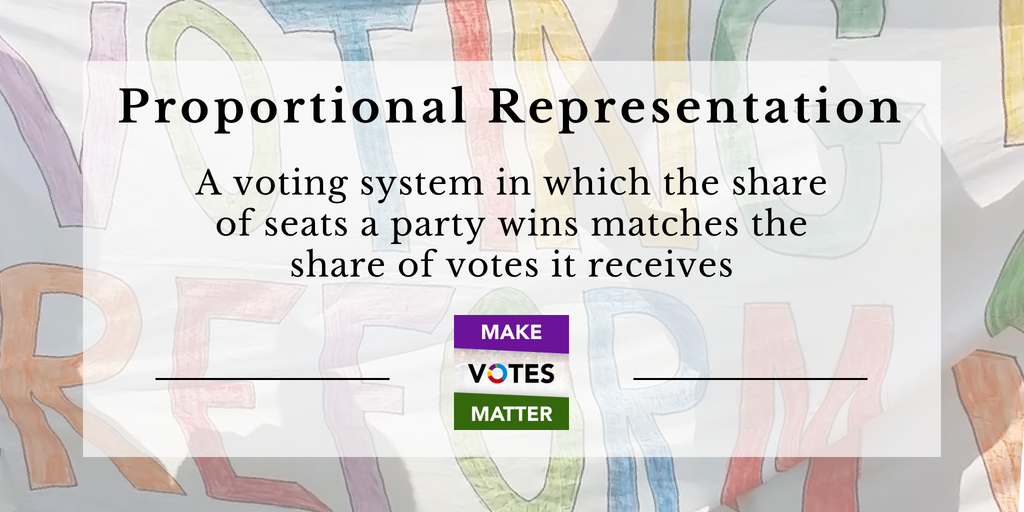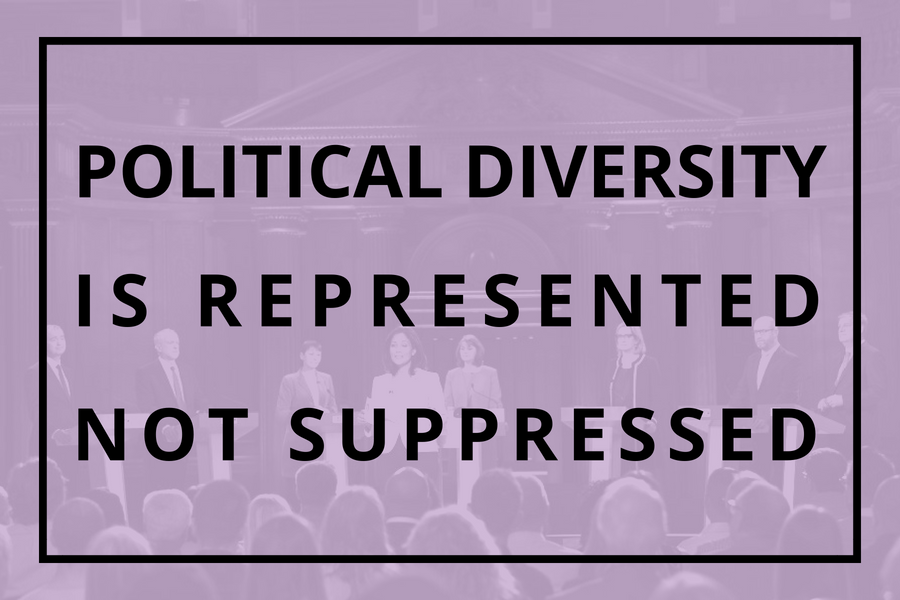Proportional Representation
We campaign for the UK to adopt a form of Proportional Representation for general elections
Proportional Representation is any voting system in which the share of seats a party wins matches the share of votes it receives. There are many different systems of Proportional Representation, but they all aim to make sure seats match votes.
The UK currently uses the primitive First Past the Post voting system - which causes severe problems for voters, our politics and our society. From its definition alone, it's easy to see how Proportional Representation solves the problems of First Past the Post.
Click on the icons below to see what Proportional Representation would mean for the UK...
Most democracies - and the vast majority of developed countries - use some form of Proportional Representation for their general elections. There are several families and countless formulations of proportional voting systems - each with their own features. No proportional voting system is as flawed as First Past the Post, and good systems of Proportional Representation - which have a strong constituency link, enhanced voter choice and accountable representation - are incomparably better.
Make Votes Matter does not have a preferred voting system. Our role is to build consensus between the parties, organisations and politicians of the MVM Alliance about the criteria that define good voting systems, and coordinate an unstoppable drive to #ChangeTheVotingSystem. In July we launched the Good Systems Agreement - a historic consensus on what good voting systems look like and how to get there. We believe the final choice would ideally be made by a people-led, deliberative process such as a Citizens' Assembly.
The systems below are some tried-and-tested forms of Proportional Representation which we believe could be appropriate for the UK.
Forms of the Additional Member System are used to elect the Scottish Parliament, the Welsh and London Assemblies, and for general elections in Germany and New Zealand.
Half the MPs are elected to single-member constituencies just as they are now. The other half are elected to represent multi-member regions. In Scotland, every voter has one Member of the Scottish Parliament (MSP) accountable to their constituency and seven MSPs accountable to their region. A voter can appeal to any one of these MPs to seek representation.
Regional MPs could be elected using Open or Flexible Lists to further strengthen voter choice.
Different forms of Open or Flexible List PR are used for general elections in Denmark, Finland, Iceland, Norway and Sweden.
MPs are elected to multi-member constituencies - so each voter has a number of MPs to represent them.
Parties put forward lists of candidates for each constituency. Voters choose which party to support and are then able to vote for specific candidates standing for that party. This gives voters a choice of candidates within the party they want to vote for - something First Past the Post does not allow.
Forms of the Single Transferable Vote (STV) are used in the Republic of Ireland and Malta, in addition to the Northern Ireland Assembly, Scottish local elections, Tasmanian Parliament and Australian Senate.
MPs are elected to multi-member constituencies - so each voter has a number of MPs to represent them.
Rather than voting for party lists, voters rank candidates in order of preference and can include candidates from any party in their ranking, giving voters a great deal of choice. Candidates need a particular number of votes to be elected. Excess votes for winning candidates and votes for losing candidates are reallocated according to the voters' preferences until all seats are filled.


















